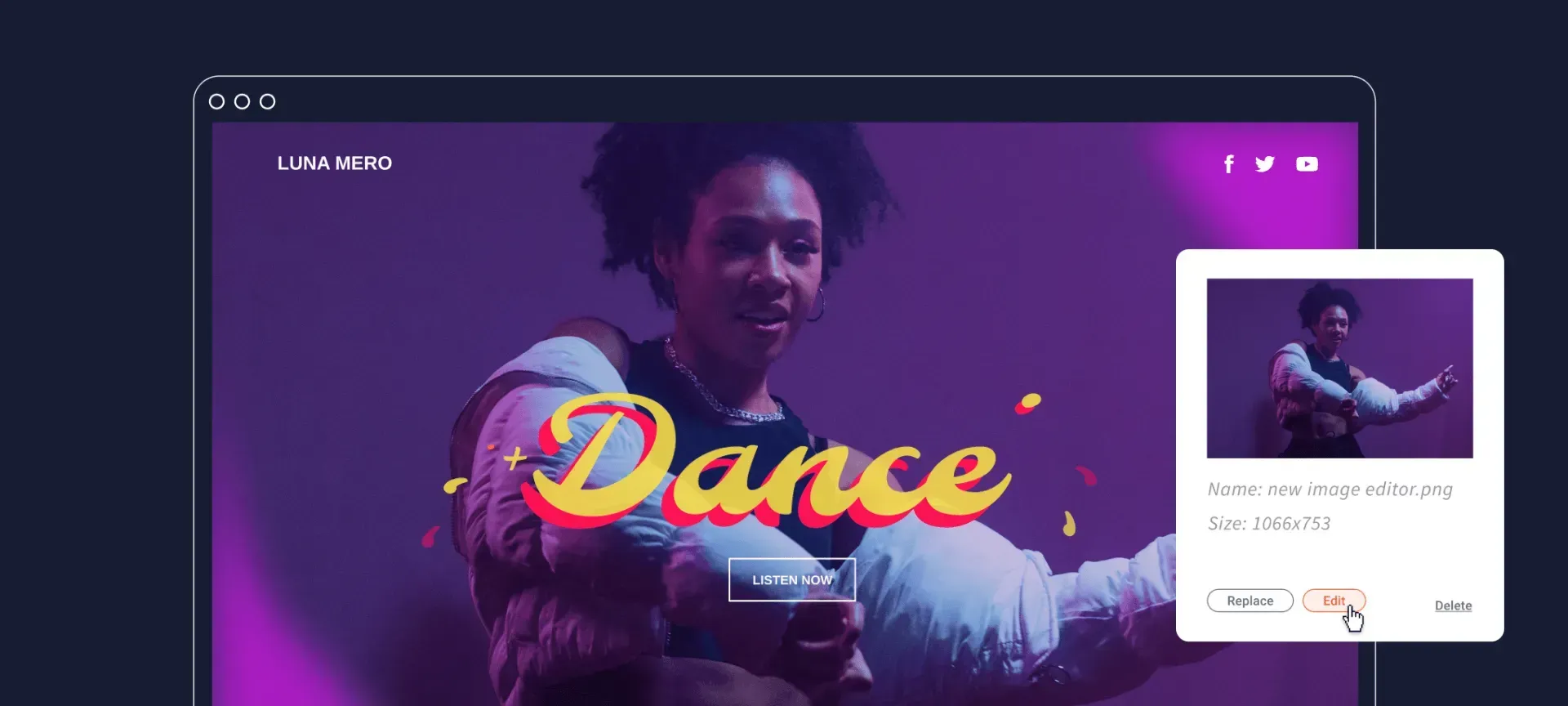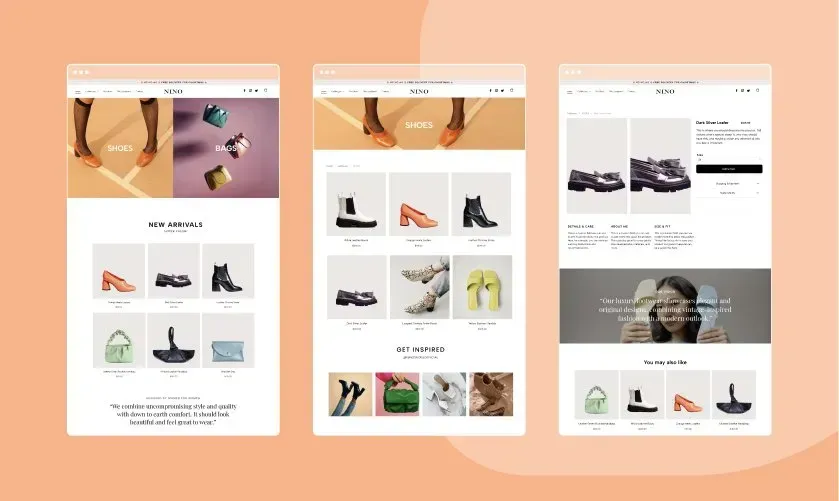These days, we do just about everything online (studying, shopping, playing games etc) which is why there’s never been a better time to be in eCommerce.
Nowadays, if you’re selling anything—whether that’s custom made jackets, baked goods, flowers, jewellery or whatever it may be—you need to hop on board the eCommerce website train. An
eCommerce website offers you the chance to build your brand, connect with more customers, and sell more products than ever before—but only if you’ve got the right website design.
Web design is critical when creating a successful eCommerce site. Good eCommerce web design is all about using the right images, terminology, graphics, images and colours to convince visitors to make a purchase. Your eCommerce website design should attract potential customers, provide the best user experience and present your business in the best light. So, not only does your site have to look good and be on-brand, but it also needs to drive your website visitors to take action. But how do you do that?
Here are the top 9 eCommerce web design tips to help you take your business to the next level:
1. Keep it simple
When it comes to designing your eCommerce website, simple is always best. The more elements you have on the page, the more it takes away from the entire point of the website—closing the sale. You don’t need every colour of the rainbow, all the pop ups promoting different discounts or even adverts to your upcoming events on your eCommerce website—all they do is act as distraction. Keep your design clean and simple—and keep the focus on the sale you want to make.
2. Only use high quality images
It’s common knowledge that images increase conversions, and that’s even more true when it comes to eCommerce. If you want people to buy your products, you need to show them what they’re buying via high-quality product images.
Getting professional images of all your products (and having images of your product from multiple different angles) goes a long way in building trust in your customers. If they feel confident that they know what they’re buying, they’re more likely to make the purchase with you. But if there are no images of the product they want to buy (or just low quality images that don't do it justice), they’re going to be hesitant to make the purchase. So do yourself a favour and have plenty of high quality images of the products on your eCommerce site.
3. Make branding YOUR PRIORITY
When it comes to shopping online, people want to buy from established brands they can trust. If you want to build the trust and drive serious sales, you need to put some serious thought into your branding. Your branding is the identity of your eCommerce business; it’s who you are as a company, what you’re all about, and how you’re different from/ better than your competitors—and it plays a huge part in building that fundamental connection with your audience and driving those sales.
4. Use social proof throughout your site
Another way to build trust and maybe one of the best ways to do it - provide social proof. When you’re designing your eCommerce site, look for ways to show your potential customers the positive feedback you’ve gotten from your existing customers. But how can you do that? Adding a ratings section so people can rate your products (and get as many 5 star reviews as you can). Or adding a testimonials section where you feature customer photos and quotes about the great experience they had working with you. Don't forget to ask customers to review your products—and what they like about them—and then add them to your site where relevant.
The more your visitors see that other people have had a positive experience on your site and with your business, the more trustworthy you appear—and the more sales you'll make.
5. Think like your audience
If you want your eCommerce web design to connect with your audience, you need to think like your audience. Ultimately, there are just a few things your potential customers want in an eCommerce experience—a website that’s easy to navigate, well-designed, and makes the process of shopping as easy, straightforward, and hassle-free as possible.
During the design process of your site, put yourself in your audiences' shoes. How can I :
- Design my site so it's easy to navigate?
- Organise the products in a way that makes sense for my audience?
- Simplify the checkout process?
When you think like your customer, you can anticipate what they want from your website—and then design it in a way that meets their needs.
6. Make your content scannable
Research shows that most website visitors only read around 20% of the text on a web page. Instead of reading content word for word, they simply scan the text looking for key information/ keywords. With this in mind, to get your point across and drive sales in the process, you need to make all your web content scannable.
Break up your content, whether that’s product descriptions, blog posts, or a Terms & Conditions page, into an easy-to-scan format. Keep sentences and paragraphs short, use bolding to call attention to key information, and use bullet points to break up large blocks of texts. The easier your content is to scan, the more likely your audience will absorb the right information—and the more likely you’ll be able to make a sale.
7. Create categories that are easy to navigate
Nothing will kill a sale faster than clunky product pages. If your website visitors have to click around eighteen different menus before they find the product they’re looking for, they’re going to bail so fast—and click their way right to a competitor’s site. NOT what you want.
This links nicely to making your content scannable and user friendly for your audience. Make your product categories and product pages easy to navigate. Make it easy for your customers to search for products and to filter products by things like colour, size, price range or product type. The easier it is to navigate and find what they’re looking for, the easier it will be for them to make a purchase on your site.
8. Make checkout easy peasy
Remember how we said nothing kills a sale faster than clunky product pages? Well, an overcomplicated checkout is definitely a close second. If your checkout process is a pain to navigate/work out, you’re going to lose customers.
Make the checkout page design clean, simple, and easy to navigate. Give your customers the option to register for your site or to check out as a guest. Make everything about the process as crystal clear as possible: what information they need to provide to process the purchase (and where they need to enter it), the different shipping options available (and how much they cost), and what to do in case there’s a problem with their order or they need to return the product. Once the purchase is complete, direct your customers to a confirmation page so they know everything went through perfectly. In a nutshell, if you want people to buy from you, make the checkout process as easy as possible.
9. Make your website responsive
Mobile has officially surpassed desktop as the most popular way to surf the internet. If you want to capture the customers who want to shop on their phones or tablets, you need to make sure your website design is fully responsive. Otherwise you might not convince those valuable mobile visitors that your site is where they want to make a purchase.
Also Google ranks websites that have been built with a mobile experience first so keep that in mind when you're building your eCommerce store - appearing at the top of Google's results when your customers are searching for you is a power you must utilise if you want to drive sales.



